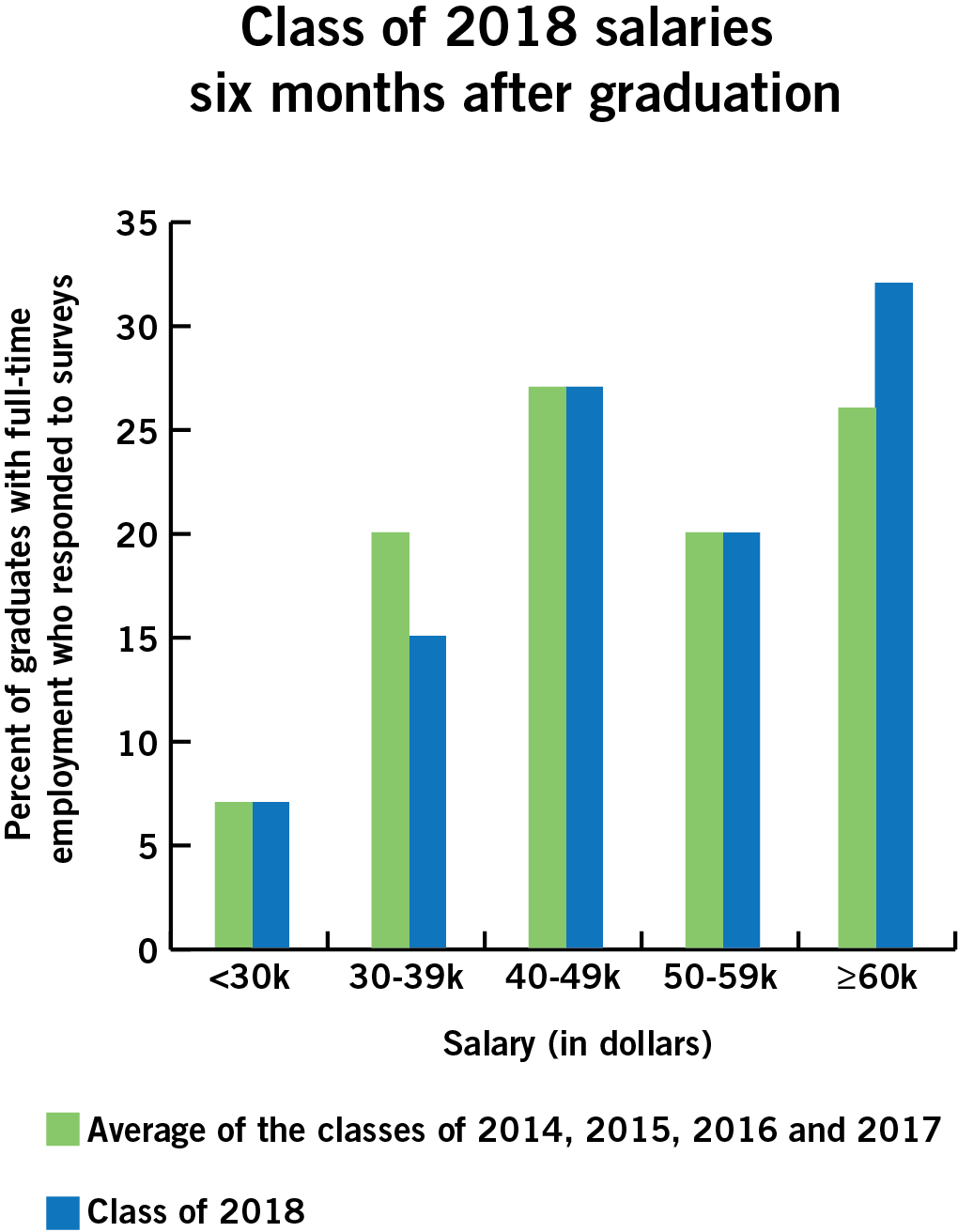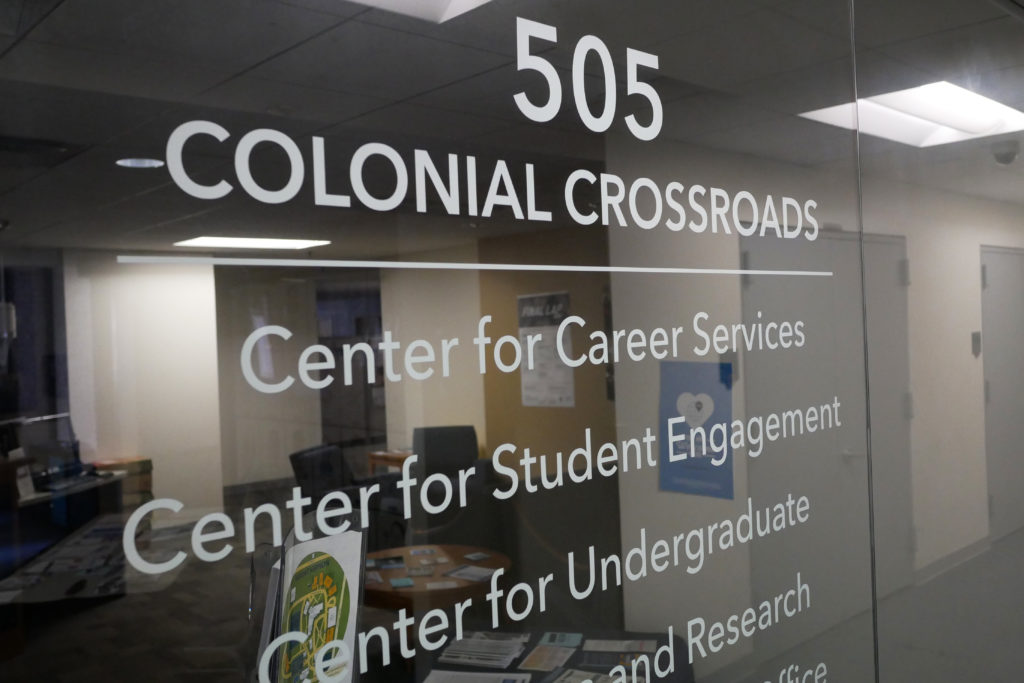Students in the Class of 2018 entering the workforce after graduation are making more money on average than their peers from the previous four classes, according to an annual University survey.
The First Destination Survey – an annual questionnaire sent to the last graduating class six months after Commencement that asks questions about their post-graduation plans – found that 32 percent of the Class of 2018 took jobs that pay more than $60,000, a 6 percentage point increase from the average salary of the previous four graduating classes. Officials said the Center for Career Services continues to help students find employment through career coaching after they graduate.
Of the 84 percent of the graduating class that responded to the survey, 87 percent of recent graduates had plans for the future, including employment, continuing education, community service or travel, about a 2 percentage point decrease from last year, according to the survey, which was released Monday.

Alyssa Ilaria | Graphics Editor
Source: First Destination Survey
Rachel Brown, the associate vice provost for University Career Services, said the slight increase in salaries was not notable relative to the figures from last year, but the 2 percentage point annual decrease in graduates earning under $30,000 demonstrates that fewer recent alumni are earning lower wages than their peers before them.
Brown said that overall, the career outcomes of recent graduates have been “consistent” and “strong” between years.
Eight percent of graduates accepted a job offer in the public sector, a 2 percentage point decrease from 2017, according to the survey of the Class of 2018. The percentage of students working at nonprofits and private for-profit companies both increased by 1 percent.
Brown said the decrease in public sector employment is likely attributable to hiring delays caused by recent government shutdowns and the 2017 federal hiring freeze. The survey may not capture students who received job offers from the government later than usual, she said.
“It’s too early to know if it is an actual dip, or if it is a delay, and so that’s something that we want to keep an eye on,” Brown said.
Brown added that 80 percent of respondents to the survey provided answers from about mid-March to mid-May before Commencement last year. As a result, some of the 13 percent of students who reported they were seeking employment have likely found jobs, she said.
In past years, officials have released the survey in early or mid-April. Brown said the release of this year’s results was delayed because officials began collecting information for the survey using Handshake, GW’s job search platform, to increase the questionnaire’s response rate.
Michael McKenzie, the managing director of Career Learning and Experience at the Center for Career Services, said students and graduates may be improving their salary negotiation skills with the University’s career coaches, explaining the jump in salaries. He said the coaches can help graduates understand the typical salary range for their industry, an important figure to understand when negotiating.
He said the center will contact the 13 percent of graduates who are still seeking employment and connect them to alumni and career coaching resources.
“We’re just checking in so they know that resources are there,” he said. “Some people drop away from it and don’t think they need our help. They might say, ‘No, I’m OK.’ But when it comes to three months and six months and they’re still looking, we need to be reaching out to them.”
Career services experts said the high percentage of recent alumni with plans lined up after graduation is promising for prospective and incoming students.
Melissa Medlin, the director of the University of North Alabama’s Career Center, said that despite the slightly decreased percentage of students who have post-graduation plans, the figure is high enough to demonstrate the value of a degree from GW to prospective students.
“The higher the percentage of students who are employed after graduation can be an indicator of the quality of the education,” she said. “So if 87 percent of your students are employed within six months after graduation, that shows that they have been prepared with the skills that they need.”
Gary Miller, the director of University Career Services at the University of North Carolina at Chapel Hill, said universities often struggle to obtain data from students about post-graduation plans. A typical knowledge rate measuring what graduates plan to do after graduation is about 65 percent, he said.
Officials said GW’s knowledge rate is 84 percent, which gives administrators a more accurate picture of students’ plans after graduating.
Miller added that while career counselors cannot guarantee students receive employment after graduation, staff have the ability to “influence” career outcomes if students are willing to think ahead about their futures.
“If a student is intentional about their planning, and does so relatively early, and higher education professionals are keenly supporting students as individuals, the likelihood of a desired outcome is greatly increased,” he said in an email.
Alec Rich contributed reporting.





